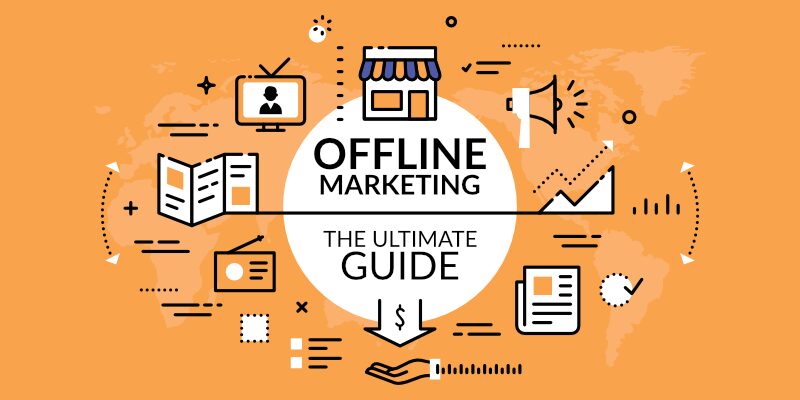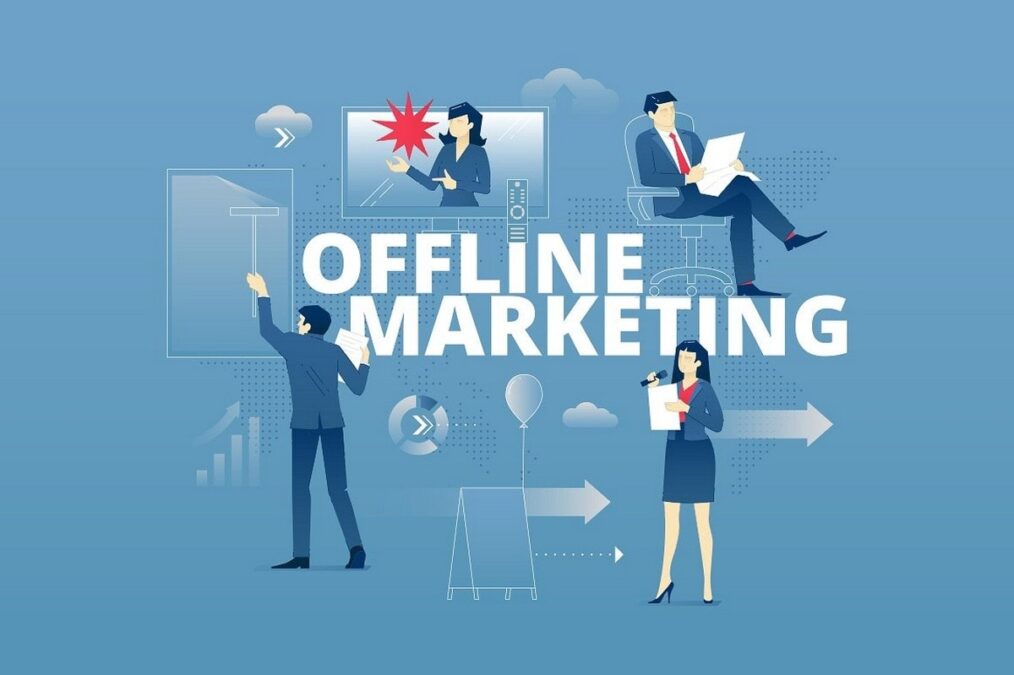In the era of digital dominance, marketing has seen a significant shift towards online platforms. From social media campaigns to search engine optimization, the digital realm has become the primary focus for many businesses.
However, as the digital landscape becomes increasingly saturated, there’s a noticeable resurgence in offline marketing strategies. These traditional methods, often overlooked in recent years, are making a comeback, proving that they still hold immense value in today’s market.
The Value of Face-to-Face Interaction

In a world where digital interactions are the norm, the significance of human connection cannot be understated. Personal interactions play a pivotal role in building trust with potential clients and customers.
When a customer can see a face, shake a hand, or hear a voice, it creates a memorable experience that digital platforms often can’t replicate. This personal touch can lead to stronger relationships and increased loyalty. For more insights on the importance of human connection in marketing, visit here.
Pro Tip: Studies have shown that face-to-face interactions can lead to faster decision-making and higher conversion rates compared to digital interactions.
Tangibility and Sensory Engagement
There’s something inherently powerful about holding a physical object in your hands. Whether it’s a brochure detailing a company’s services or a business card that leaves a lasting impression, tangible marketing materials have a unique way of engaging multiple senses. This multisensory engagement can lead to better brand recall and a deeper connection with the audience.
- Engaging Multiple Senses: Physical materials allow customers to see, touch, and sometimes even smell the brand, creating a multi-dimensional experience.
- Lasting Impressions: A well-designed flyer or business card can stay with a potential client long after an online ad has disappeared from their screen.
Fun Fact: The human brain is wired to remember tactile experiences better than digital ones. This is why many people still prefer reading physical books over e-books.
Localized Targeting and Community Building

One of the significant advantages of offline marketing is the ability to target local audiences directly. By focusing on a specific community or region, businesses can foster a sense of belonging and create strong local brand advocates. Word-of-mouth marketing, one of the oldest and most effective forms of advertising, thrives in these close-knit communities.
- Connecting with Local Audiences: Hosting local events or sponsoring community activities can position a brand as a community leader.
- Leveraging Personal Interactions: Engaging with customers on a personal level can lead to organic word-of-mouth referrals.
Events and Experiential Marketing
Events offer brands an opportunity to create immersive experiences for their audience. From product launches to industry conferences, offline events allow businesses to interact directly with their target audience, gather real-time feedback, and encourage user-generated content.
- Hosting Offline Events: This can range from workshops to large-scale conferences, depending on the brand’s objectives.
- Creating Immersive Brand Experiences: Setting up experiential booths or interactive displays can engage attendees and make the brand memorable.
- Encouraging User-Generated Content: Attendees often share their experiences on social media, providing brands with valuable organic exposure.
Pro Tip: Integrating a digital element, like a hashtag for the event, can amplify the reach of an offline event, bridging the gap between offline and online marketing.
Offline Strategies in the Digital Age

In an age dominated by digital platforms, it might seem counterintuitive to invest in offline strategies. However, the most successful brands recognize the importance of a balanced approach. Offline marketing can seamlessly integrate with online strategies, creating a cohesive brand experience for consumers.
- Synergy Between Offline and Online: A billboard advertisement might direct viewers to a website or social media page, turning a passive viewer into an active participant in the brand’s narrative.
- Integrating QR Codes: These quick-response codes can be printed on physical materials, directing users to online resources, promotions, or product pages.
- Amplifying Offline Efforts: Sharing images or videos of offline events on social media can extend the event’s reach and engage a broader audience.
Fun Fact: QR codes, which originated in Japan in the 1990s for the automotive industry, have found renewed popularity in marketing due to their ability to bridge the offline-online gap.
Tracking and Measuring Offline Success
One of the challenges of offline marketing is measuring its impact. Unlike digital campaigns where metrics are readily available, offline strategies require more creative tracking methods.
- Challenges of Measuring Offline ROI: Without direct analytics, businesses might wonder about the effectiveness of their offline campaigns.
- Unique Tracking Methods: Using promo codes exclusive to print materials or dedicated phone lines for specific campaigns can provide insights into campaign performance.
- Online Tools for Offline Impact: Surveys, website traffic spikes post-events, or increased online searches can indicate the success of an offline campaign.
Case Studies: Successful Offline Campaigns

Coca-Cola’s “Share a Coke” Campaign
This personalized campaign encouraged consumers to find bottles with their names or the names of loved ones. It not only boosted sales but also created a massive online buzz as consumers shared their finds on social media.
Apple’s Flagship Store Experience
Apple’s stores, with their minimalist design and hands-on product displays, offer a unique tactile experience that reinforces the brand’s premium image.
Nike’s Experiential Retail Spaces
Nike has been at the forefront of combining retail with experience. Their stores often feature areas where customers can test products in real-world conditions, enhancing the shopping experience.
Overcoming Potential Challenges

Offline marketing, while effective, comes with its set of challenges.
- Budget Considerations: Physical materials and events can be costlier than digital campaigns. It’s essential to ensure a good ROI.
- Adapting to Changing Consumer Behaviors: As consumer preferences evolve, offline strategies must adapt to stay relevant.
- Navigating Logistical Hurdles: Organizing events or large-scale print campaigns requires meticulous planning to avoid logistical issues.
FAQ
Why is offline marketing still relevant in a predominantly digital world?
While the digital realm offers vast reach and precise targeting, offline marketing provides genuine human interactions and tangible experiences that can’t be replicated online. This combination of personal touch and physical engagement often leads to deeper brand connections and loyalty.
How can small businesses benefit from offline marketing strategies?
Small businesses can leverage offline marketing to establish a strong local presence, connect directly with their community, and build trust through personal interactions. Strategies such as local events, workshops, or community sponsorships can be cost-effective and yield significant returns in terms of brand recognition and loyalty.
Are there specific industries or sectors where offline marketing is particularly effective?
Yes, industries that value personal relationships, such as real estate, hospitality, and local retail, often benefit greatly from offline marketing. Additionally, sectors where consumers appreciate tactile experiences, like fashion, home decor, and luxury goods, can also see significant advantages from offline strategies.
Conclusion
In the ever-evolving landscape of marketing, the importance of offline strategies remains steadfast. While the digital realm offers vast opportunities, offline marketing provides the human touch and tangible experiences that digital can’t replicate.
By integrating both approaches, brands can create a comprehensive marketing strategy that resonates with consumers on multiple levels. Embracing this holistic approach ensures sustained brand growth and success in the market.




